
Plan of Action for RIPE Atlas Anchor VMs
• 4 min read
Members of the RIPE Atlas community have asked us to implement RIPE Atlas vantage points as Virtual Machines (VMs). In order to address these requests, we came up with a plan of action.

Articles
Likes on articles
For many years I have been the leader of the Research and Development team at the RIPE NCC leading a dedicated team of thinkers to support the RIPE community by providing network research, data analysis and prototype tool development and services including RIPE Atlas and RIPEstat. As of 2023, I'm working as a principal engineer in order to assist the CTO and the RIPE NCC's information services.
Email: robert@ripe.net

• 4 min read
Members of the RIPE Atlas community have asked us to implement RIPE Atlas vantage points as Virtual Machines (VMs). In order to address these requests, we came up with a plan of action.

• 7 min read
In this article we will give some insights into the overall architecture of the RIPE Atlas network and how we manage secure communication with our probe flock.
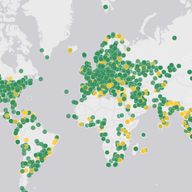
• 7 min read
It's possible to look at RIPE Atlas probes from the perspective of IoT - a key element of the service is the physical devices deployed all over the world. Read on to find some interesting insights from this perspective.
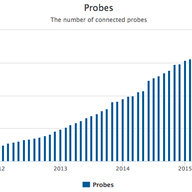
• 4 min read
As RIPE Atlas is expanding, it is approaching the magical milestone of 10,000 probes. However, as our public graphs also illustrate, the expansion has slowed down recently.
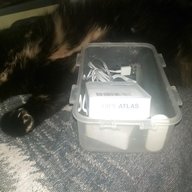
• 8 min read
This article is intended to make RIPE Atlas users aware of ethical issues that could arise when using RIPE Atlas. We do not intend to propose any new formal processes or procedures to address the relevant ethical issues, but we do want to encourage members of the RIPE Atlas community to consider th…

• 6 min read
"Non-public measurements" is a feature of RIPE Atlas that allows users to use the infrastructure to measure things while not sharing those results with the public. Is that still a useful feature? Should it exist in the future? Please take the polls.

• 7 min read
We announced earlier that the RIPE Atlas APIs will change around the end of the year. In this article we give some advice on how to make this transition.
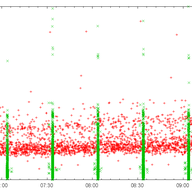
• 12 min read
There are a number of interesting new features and enhancements for RIPE Atlas users. Learn how you can put them to use!

• 3 min read
After a discussion with the community about HTTP measurements, we'll start implementing this as a publicly available measurement type.
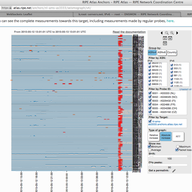
• 3 min read
During the RIPE 70 Meeting in Amsterdam this week (on 13 May around 10:00 UTC), we experienced a network outage at AMS-IX. Let's see how this was monitored by various tools.
“Hi, I am the project manager of the zonemaster (zonemaster.net) dns validation tool (https://github.com/zonemaster/zonemaster/blob/master/README.md). This open source tool is developed by Afnic (the French registry) and IIS (the Swedish registry). This tool is used by RIPE to validate the reverse IP address in the RIPE database. IMHO, it is the best available tool for DNS zone validation (everything open (BSD-2 licence for source code and Creative Commons Attribution 4.0 International License for the documentation) and with extensive documentation of all its modules and test cases) and it used by many well known DNS registries and registrars. My question is - will it be possible to integrate Zonemaster source code to verify a domain 's zone from different vantage points from RIPE root anchors? If you have any feedback to provide, please contact me at sandoche.balakrichenan@afnic.fr”
It's not entirely clear if you want to add RIPE Atlas support to zonemaster (then you can simply call APIs and integrate results that come back) or the other way around (adding zonemaster code to anchors -- which is much harder to do due to differences in working models).
“That is a rather powerful VM (the TL-MR3020 probes has 32MB ram and a Atheros AR9331@400MHz). Do the VM need to be so powerful? I would love to participate with a probe, if I could run a probe on my (weak) Intel Atom server, either as a VM or in some sort of container (systemd-nspawn/docker?). I will be more than happy to experiment if I could get access to the anchor.ks file (fell free to mail me at firstname@lastname.dk).”
There's need for more resources for an anchor than for a probe. It has services on it, for example. About probe VMs: we're looking into the possibility to introduce "software probes" deployable as a software package or such. We'll report back on this activity when we have more information.
“Given the proliferation of cheap single board computers such as the Raspberry Pi and/or most organisations having a virtualization platform of some sort, wouldn't the development of one or more images for these platforms be a better solution than tying the organisation to a single hardware vendor?”
Besides working with the above mentioned hardware, we're talking to other vendors to see what they can offer. One constraint is that we want to avoid using fully repurposeable hardware (like the Raspberry Pi) -- we fear that too many would be taken as "free hardware". We're also looking into virtual solutions: a VM anchor pilot is already ongoing. We will likely work more in this space.
“Hello, Is it possible to use INRDB and how? I need to search if an Internet prefix was announced on the Internet between 2012 and 2013, by which AS, for how long etc. Can you please help me?”
Hi, you should check out RIPEstat, specifically the routing history widget: https://stat.ripe.net/widget/routing-history#w.resource=193.0.0.0%2F21
“I also wonder whether the type of person hosting a probe has changed over time. At first it may have been more engaged "enthusiasts" who were personally keen to have a probe and ensure it remain connected. Later participants may have agreed to host a probe based on encouragement from an ambassador, but they don't really care as much or notice when their probe has disconnected.”
Indeed, this is a likely cause. However, it's difficult to measure such an effect.
Showing 15 comment(s)